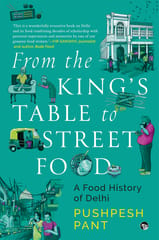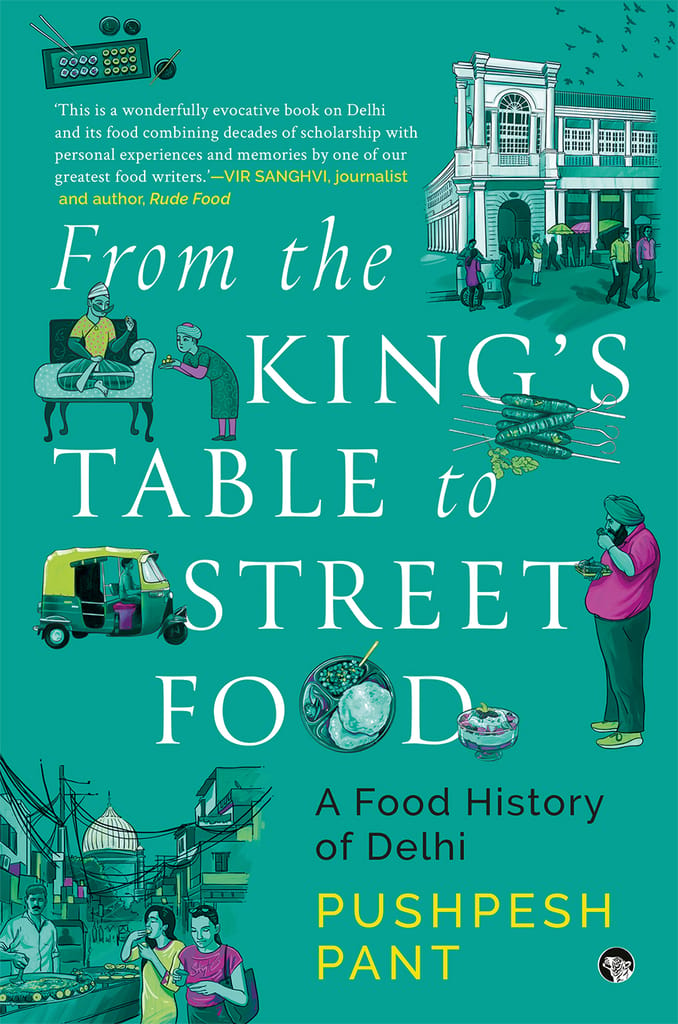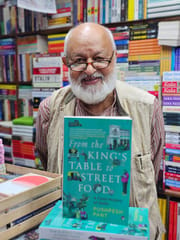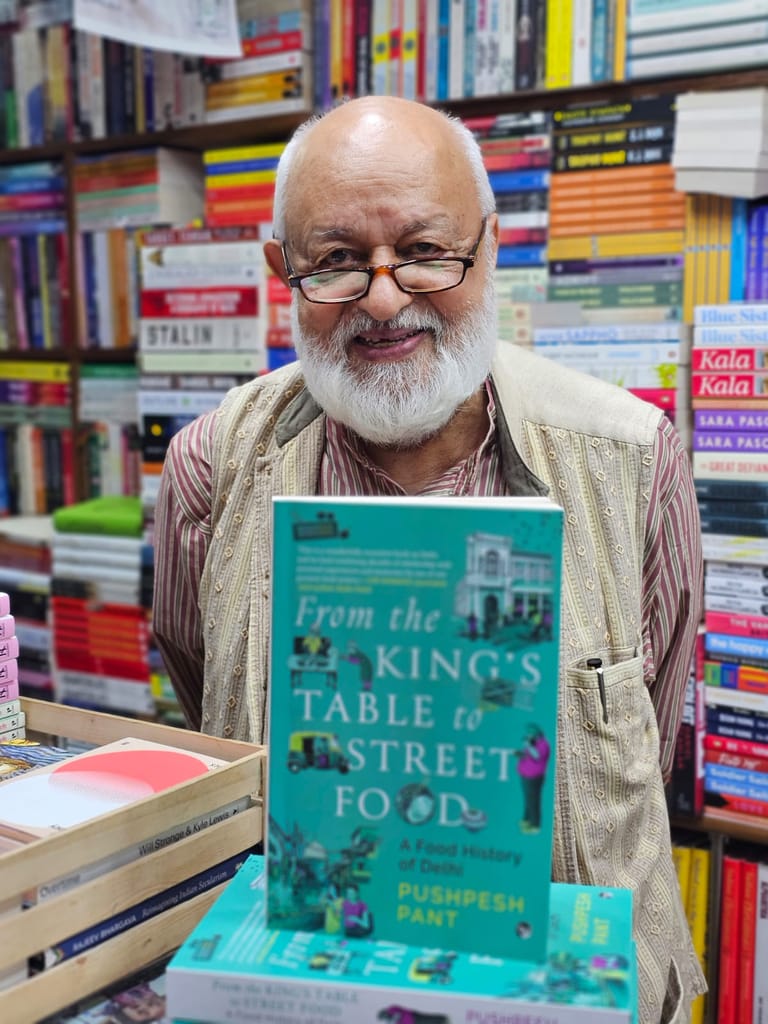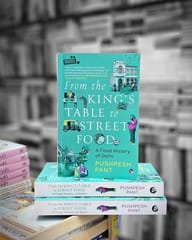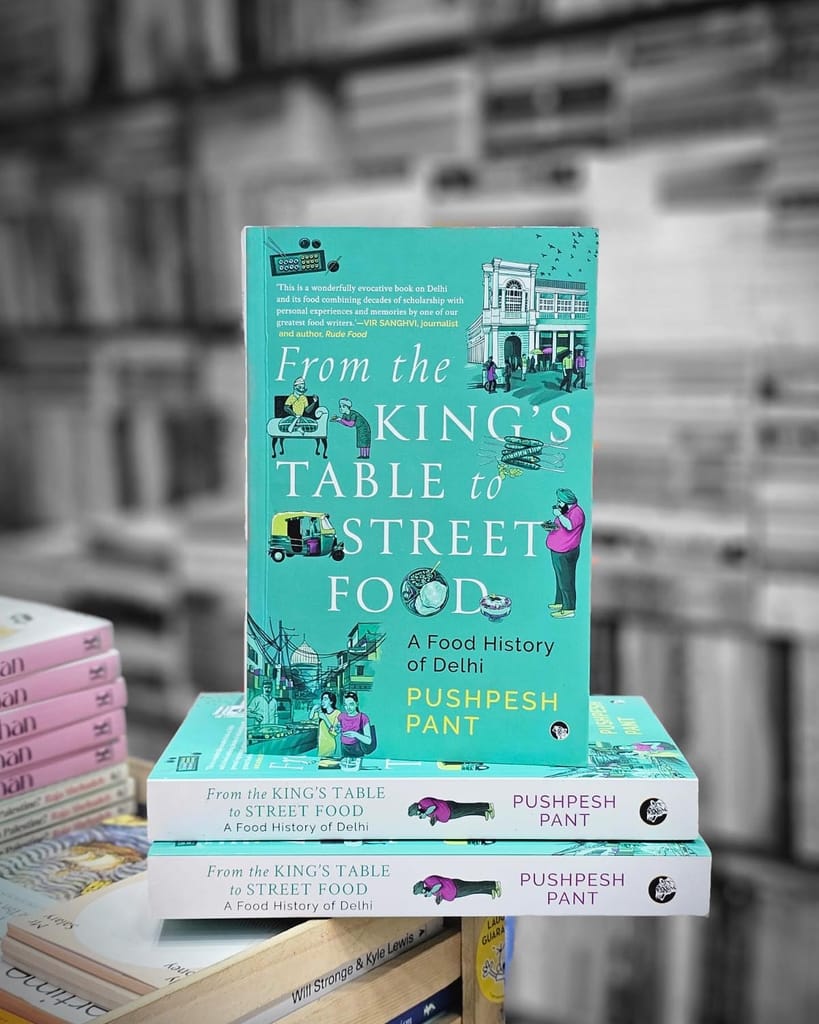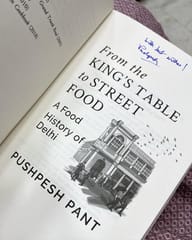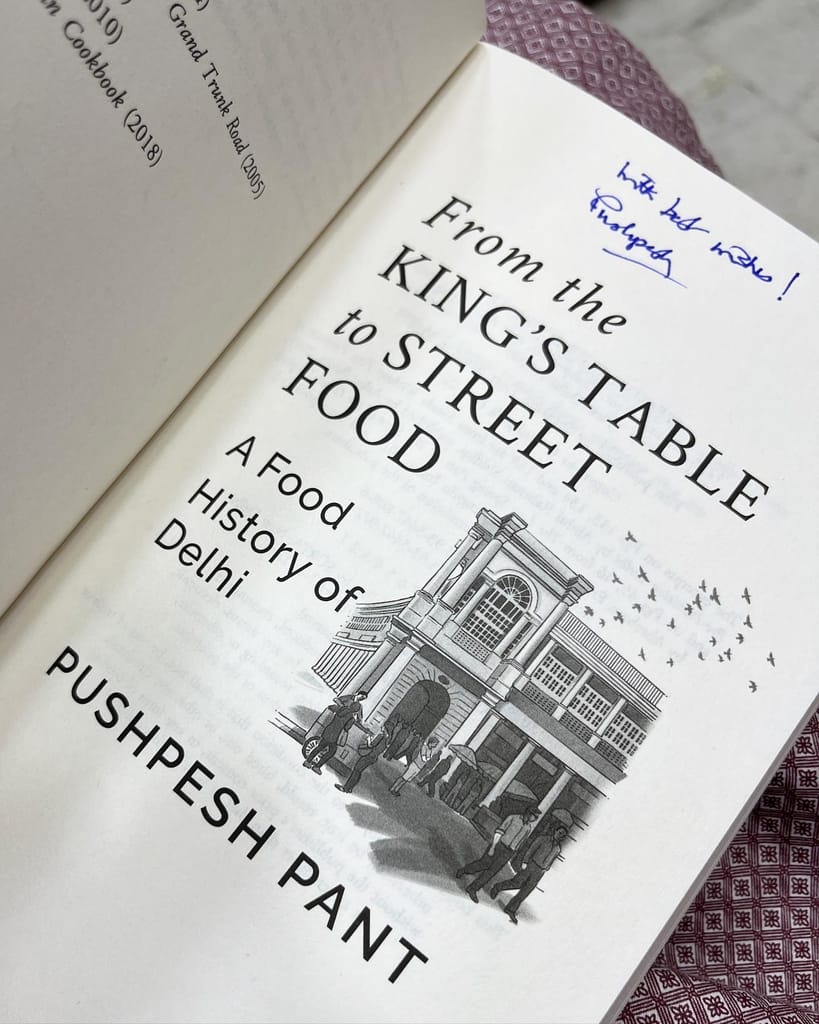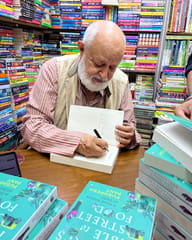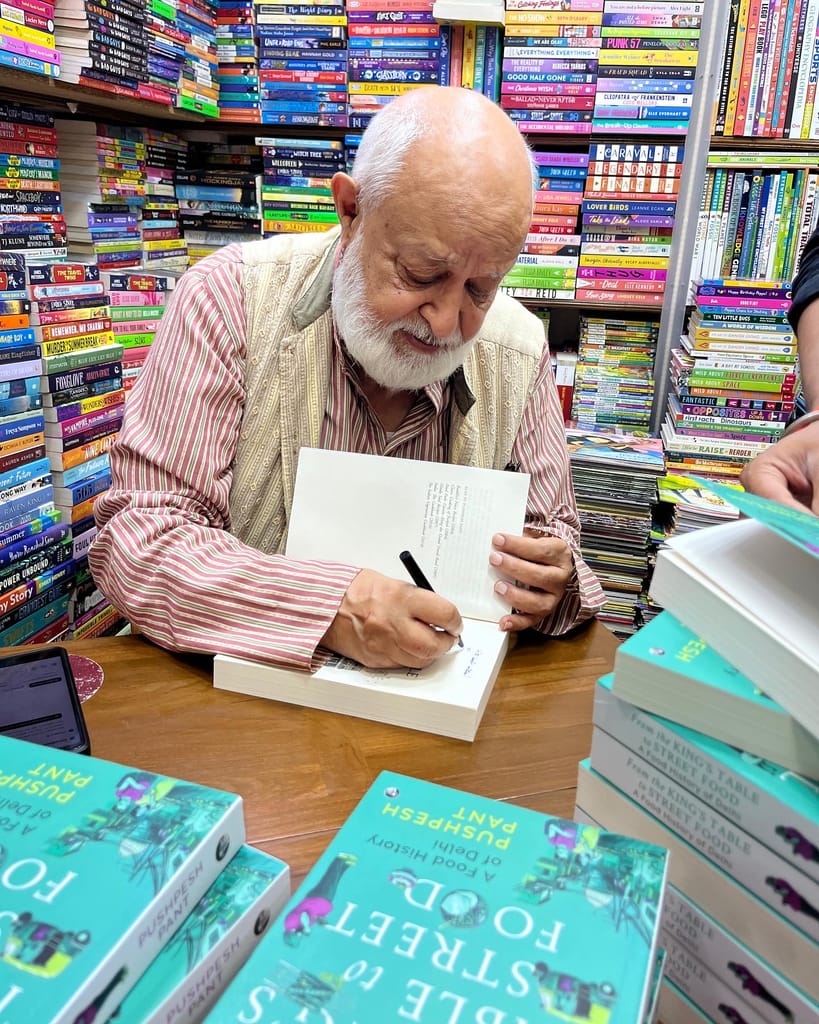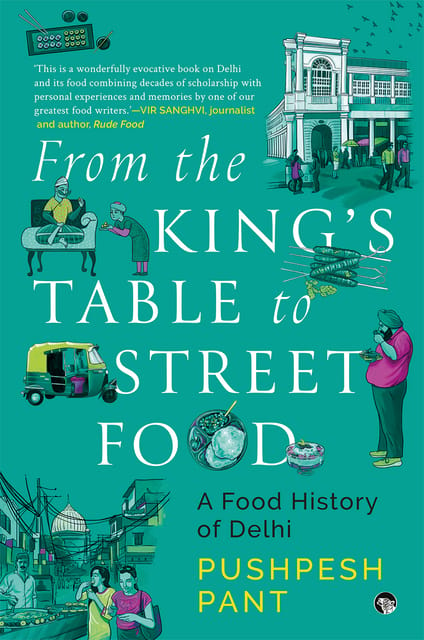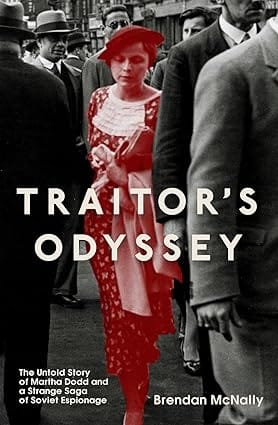-
Contemporary Fiction
- Contemporary Fiction
-
Children
- Children
-
Comics & Graphic Novels
- Comics & Graphic Novels
-
Non-Fiction
- Non-Fiction
-
Fiction
- Fiction
Signed Copies Available
FROM THE KING’S TABLE TO STREET FOOD: A Food History of Delhi
Who is an ‘asli Dilliwala’—a true-blue Delhizen—and what is his cuisine?
To answer this question, Pushpesh Pant, food historian and raconteur par excellence, takes us on a culinary journey from the Mahabharata’s Indraprastha—the first city of Delhi—to the present day, through the Sultanate, the Mughal Empire and the British Raj.
On this fascinating food trip, we savour the rich qormas and kebabs of Shahjahanabad and the Shepherd’s Pie and mutton cutlets of ‘angrezon ki Dilli’, with a light snack in between of papri or undiya, washed down with bael ka sherbet in a good Baniya home. But that is not all. As Delhi’s population grew to include migrants from across the country, so did its culinary repertoire.
The Dilliwala of today is as likely to enjoy Calcutta-style street food—chops, cutlets, puchka and jhaalmuri—in the south Delhi colony of C.R. Park, as he is to relish a berry pulao and dhansak at the Parsi Anjuman. And what better tiffin than idli-dosa-sambar from the South Indian outlets that dot the city? From a city identified largely with Punjabi and Mughlai food—butter chicken and biryani—Delhi is now a melting pot of cuisines ranging from Kashmiri, Bengali and Bihari to Andhra, Naga and ‘Indian-Chinese’.
Pushpesh Pant also tracks the growth of the city’s restaurant culture, from wayside dhabas and MacDonalds to high-end restaurants that can compete with the best in the world— justifying its claim to being a global food capital where virtually every cuisine can be found, including Japanese, Thai, Mediterranean and Korean. Drawing on a wealth of historical records and literary sources, Pushpesh Pant has written a delightful, anecdotal account of the life and food habits of each period of Delhi’s history, that is as much a feast to be enjoyed, as the food he describes.
About The Author:
Pushpesh Pant is an academic, food critic and historian. Born in 1946 and homeschooled in Mukteshwar, a small town in district Nainital, he subsequently studied History, International Relations, and Law in Nainital and Delhi. He retired from Jawaharlal Nehru University (JNU) after a long teaching career spanning four decades. He has written over fifty books on cuisine, culture, religion, and foreign policy in English and Hindi. Pant is a regular contributor to English and Hindi newspapers and periodicals. He also anchors TV programmes and produces documentaries from time to time.
9789354478086FROM THE KING’S TABLE TO STREET FOOD: A Food History of Delhi
SIZE GUIDE
Book Description
Signed Copies Available
FROM THE KING’S TABLE TO STREET FOOD: A Food History of Delhi
Who is an ‘asli Dilliwala’—a true-blue Delhizen—and what is his cuisine?
To answer this question, Pushpesh Pant, food historian and raconteur par excellence, takes us on a culinary journey from the Mahabharata’s Indraprastha—the first city of Delhi—to the present day, through the Sultanate, the Mughal Empire and the British Raj.
On this fascinating food trip, we savour the rich qormas and kebabs of Shahjahanabad and the Shepherd’s Pie and mutton cutlets of ‘angrezon ki Dilli’, with a light snack in between of papri or undiya, washed down with bael ka sherbet in a good Baniya home. But that is not all. As Delhi’s population grew to include migrants from across the country, so did its culinary repertoire.
The Dilliwala of today is as likely to enjoy Calcutta-style street food—chops, cutlets, puchka and jhaalmuri—in the south Delhi colony of C.R. Park, as he is to relish a berry pulao and dhansak at the Parsi Anjuman. And what better tiffin than idli-dosa-sambar from the South Indian outlets that dot the city? From a city identified largely with Punjabi and Mughlai food—butter chicken and biryani—Delhi is now a melting pot of cuisines ranging from Kashmiri, Bengali and Bihari to Andhra, Naga and ‘Indian-Chinese’.
Pushpesh Pant also tracks the growth of the city’s restaurant culture, from wayside dhabas and MacDonalds to high-end restaurants that can compete with the best in the world— justifying its claim to being a global food capital where virtually every cuisine can be found, including Japanese, Thai, Mediterranean and Korean. Drawing on a wealth of historical records and literary sources, Pushpesh Pant has written a delightful, anecdotal account of the life and food habits of each period of Delhi’s history, that is as much a feast to be enjoyed, as the food he describes.
About The Author:
Pushpesh Pant is an academic, food critic and historian. Born in 1946 and homeschooled in Mukteshwar, a small town in district Nainital, he subsequently studied History, International Relations, and Law in Nainital and Delhi. He retired from Jawaharlal Nehru University (JNU) after a long teaching career spanning four decades. He has written over fifty books on cuisine, culture, religion, and foreign policy in English and Hindi. Pant is a regular contributor to English and Hindi newspapers and periodicals. He also anchors TV programmes and produces documentaries from time to time.
User reviews
NEWSLETTER
Subscribe to get Email Updates!
Thanks for subscribing.
Your response has been recorded.

India's Iconic & Independent Book Store offering a vast selection of books across a variety of genres Since 1978.
"We Believe In The Power of Books" Our mission is to make books accessible to everyone, and to cultivate a culture of reading and learning. We strive to provide a wide range of books, from classic literature, sci-fi and fantasy, to graphic novels, biographies and self-help books, so that everyone can find something to read.
Whether you’re looking for your next great read, a gift for someone special, or just browsing, Midland is here to make your book-buying experience easy and enjoyable.
We are shipping pan India and across the world.
For Bulk Order / Corporate Gifting
 +91 9818282497 |
+91 9818282497 |  [email protected]
[email protected]
Click To Know More
INFORMATION
POLICIES
ACCOUNT
QUICK LINKS
ADDRESS
Shop No.20, Aurobindo Palace Market, Near Church, New Delhi

